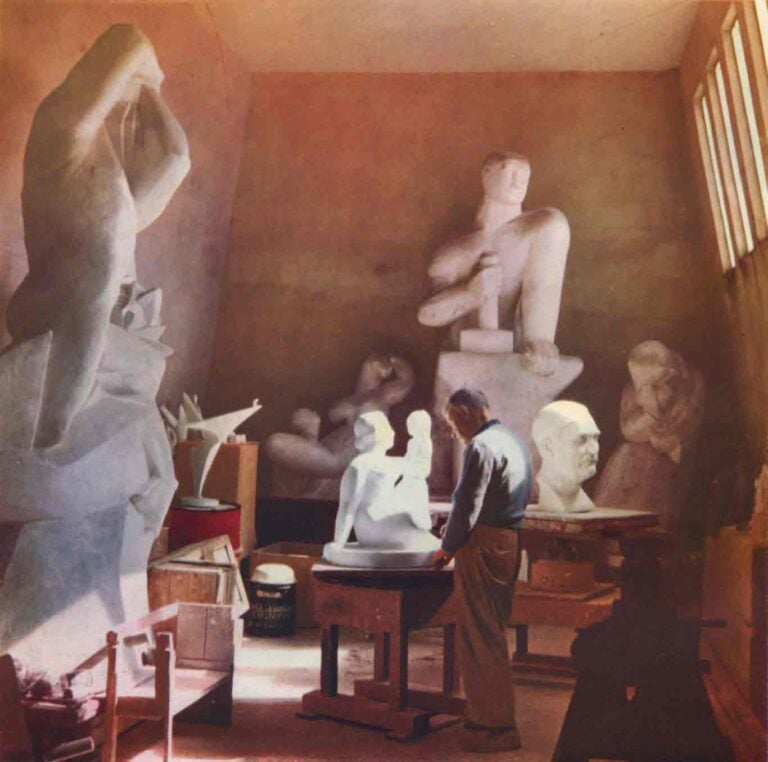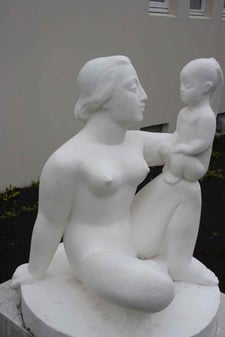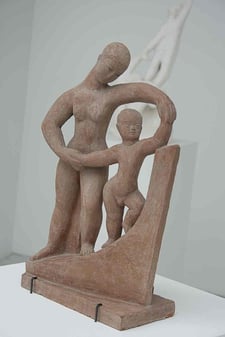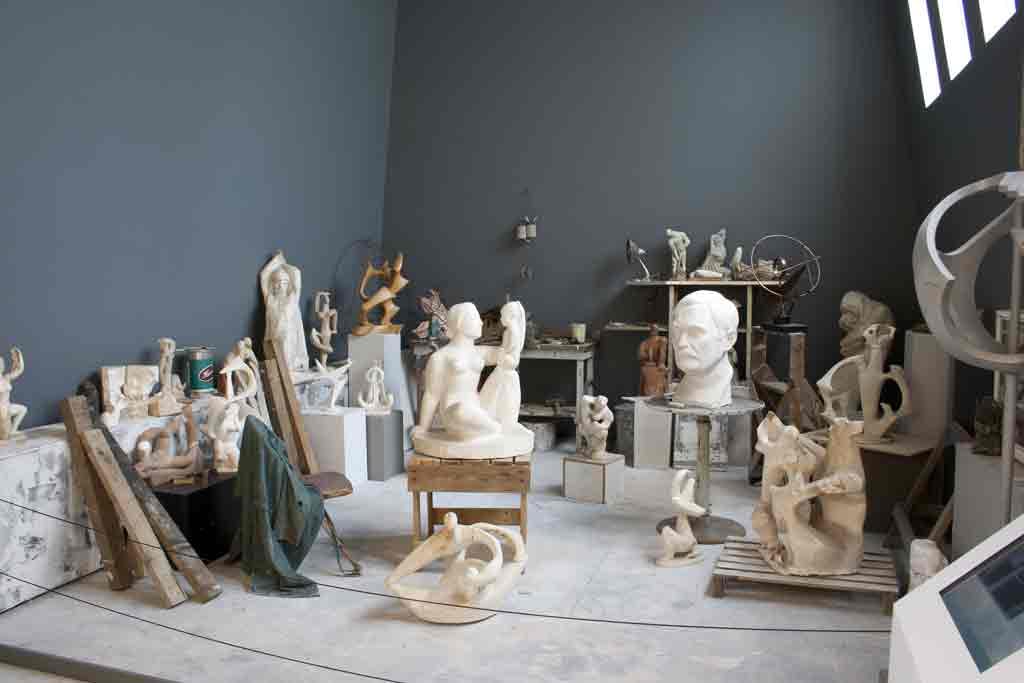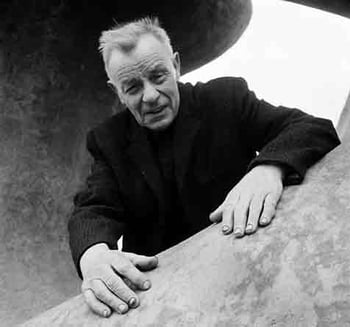– as Represented in the Work of Sculptor Ásmundur Sveinsson
The figure of the woman was a recurring theme in Ásmundur Sveinsson’s (1893–1982) sculptural work. Whether portrayed as a sensual lover, a mother protecting her child, a tireless labourer, or a furious female troll, his art constantly reflects on the various roles of women and different aspects of femininity.
The Working Woman
In the 1930s, Ásmundur often explored the lives of common folk in Iceland, with many works rooted in social realism. His sculptures frequently depicted women performing arduous tasks, with titles such as Woman Churning Butter (1934), The Water Bearer (1936), and Washing Woman (1937). These statues represent strong, powerful women, large in stature, where their forms merge with the tasks they perform into a single, unbreakable unit. The woman becomes one with her work, and these pieces can be interpreted as tributes to Icelandic working women, who provided for their families through their selfless labour.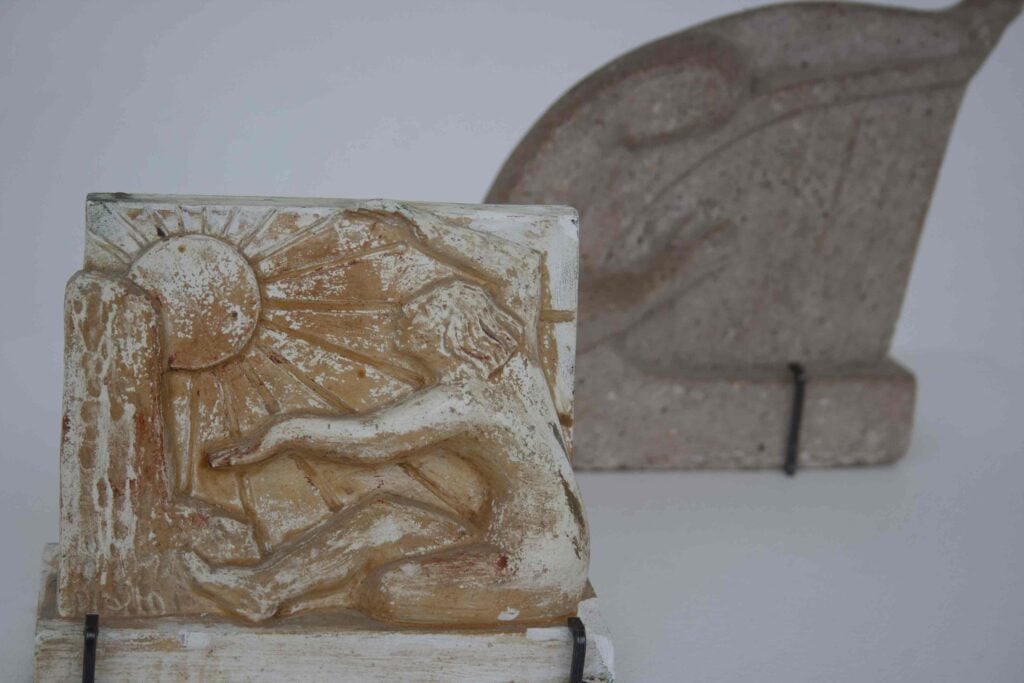
The Woman as a Symbol
Ásmundur was inspired by the mountainous landscapes of Iceland when creating The Water Bearer. His sculptures Mother Earth (1936) and The Troll Woman (1948) further depict women as symbols of nature. In Mother Earth, a woman kneels over her child as she breastfeeds, with her form closely resembling a pyramid or mountain, symbolizing the nurturing role of nature in sustaining humanity. The Troll Woman, a more abstract creation, also pays homage to Icelandic nature, with the figure’s shape echoing a mountain, complete with cliffs and caves.
The Mother
Ásmundur Sveinsson continually explored the connection between mother and child, portraying motherhood primarily as a protective force. In his work Fýkur yfir hædir (1953), named after a poem by Jónas Hallgrímsson, a woman embraces her child, sheltering it from harsh weather. The soft, curved lines of the sculpture symbolize the nurturing power of motherhood. Even more striking is the piece Módurást (1948), in which a woman holds a child with a hole in her chest, as if pierced by a bullet. This work references the horrors of war and highlights the primal strength of motherhood in the face of conflict.
Despite the recurring themes in Ásmundur’s work, his sculptures are as varied as they are numerous, reflecting his evolving artistic style. Few Icelandic artists have so boldly combined as many different “isms” or expressed themselves through such diverse methods and materials as he did.
Ásmundur’s female figures, along with other notable works, are on display at the Reykjavík Art Museum – Ásmundarsafn. Located in Sigtún, Reykjavík, the museum was both his home and studio. Intrigued by the concept of ‘work,’ Ásmundur personally designed and built the museum. Its form, combined with the numerous outdoor sculptures on the grounds, creates an impressive site that should not be missed. -HK.

